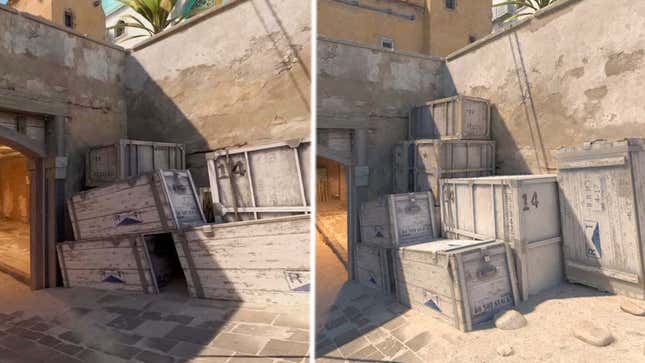The Hookup Dossier: Your Ultimate Guide to Modern Dating
Explore the ins and outs of dating, relationships, and modern romance.
Dust 2 Decoded: Navigate Like a Pro
Unlock the secrets of Dust 2! Learn pro tips and strategies to navigate the map like a champion in our ultimate guide.
Top 10 Hidden Spots in Dust 2 for Ultimate Map Control
When it comes to mastering Dust 2, understanding the hidden spots is crucial for achieving ultimate map control. In this article, we’ll explore the Top 10 hidden spots that can give you an unexpected advantage over your opponents. From vantage points to sneaky corners, these locations are often overlooked, providing excellent opportunities for ambushes and strategic plays. Let's dive into the first few!
- Long A - The Back Corner: Tucked away in a corner, this spot allows players to surprise unsuspecting enemies pushing towards A. The tight space offers a great angle for a quick kill.
- Mid - The Double Doors: Many players forget to check the area right before entering the tunnels. Hiding here can catch opponents off guard, especially during mid-control skirmishes.
- B Site - The Triple Stack: Utilizing the crates on B site provides cover while allowing players to control sightlines. It's a favorite spot among seasoned defenders.

Counter-Strike is a popular tactical first-person shooter game that emphasizes teamwork and strategy. Players can choose to play as either terrorists or counter-terrorists, engaging in various objective-based scenarios. A critical aspect of gameplay involves managing weapons and resources effectively, especially when utilizing heavy weaponry for more firepower.
Mastering Dust 2: Essential Tips and Tricks for New Players
Mastering Dust 2 is crucial for new players aiming to enhance their gameplay in Counter-Strike: Global Offensive. This iconic map is known for its balanced layout and strategic choke points. To get started, familiarizing yourself with key locations, such as A site, B site, and mid, is essential. Here are some essential tips for navigating the map effectively:
- Always check your corners while moving to avoid ambushes.
- Utilize grenades for blocking enemy vision or flushing out players hiding in tight spots.
- Communicate with your team to maintain control of essential areas.
In addition to map knowledge, mastering your aim and positioning is vital. New players should spend time practicing their shooting mechanics in offline games or aim trainers. Understanding when to engage or retreat can mean the difference between winning and losing a round. Here are some tricks to improve your overall performance on Dust 2:
- Focus on crosshair placement; keep it at head level as you move around.
- Learn common enemy positions and angles.
- Experiment with weapon purchases depending on your economy and situation.
How to Improve Your Callouts and Communication on Dust 2
Effective callouts and communication are crucial for success on Dust 2. To improve your callouts, it’s essential to use clear and concise terms that your teammates can easily understand. Start by familiarizing yourself with common callouts that relate to the map's key areas. For instance, use specific names for locations like 'Long A,' 'Catwalk,' and 'B Site' instead of vague descriptions. This can be supplemented with visual aids, such as a labeled map, to help new players learn quickly. Create a team glossary for important locations where everyone can contribute and refer to during games.
Additionally, practicing your communication skills during gameplay can greatly enhance your teamwork. Implement a structured communication format, where players call out enemy locations, their health status, and their actions. For example, when you spot an enemy, you might say, 'One on A Long, 50 HP, pushing towards site.' This format keeps information organized and ensures that everyone can react promptly. Remember to maintain a calm tone, and avoid excessive chatter, which can lead to confusion. By prioritizing concise information and teamwork, you’ll significantly improve your team’s performance on Dust 2.